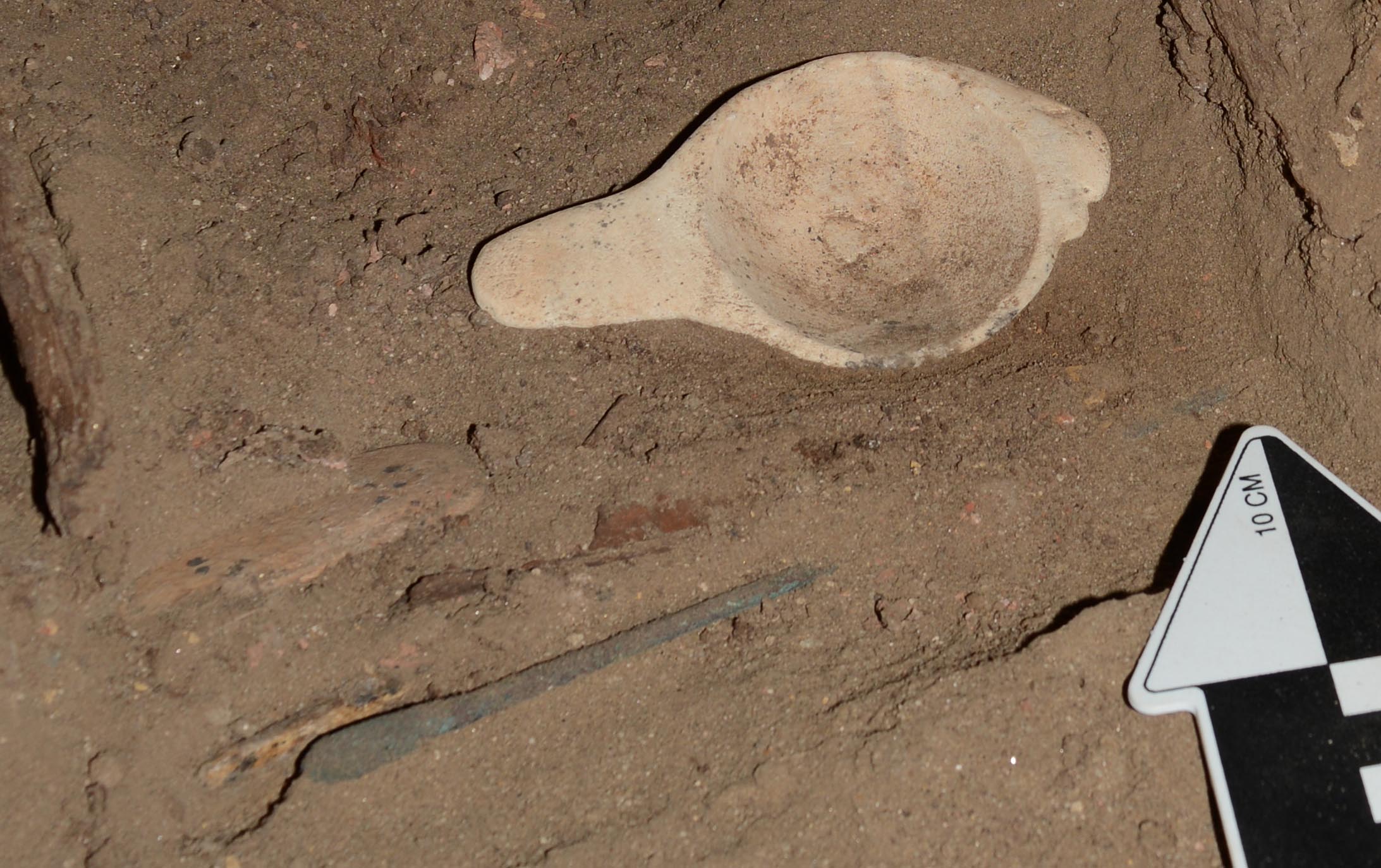الملعقة البطة للتزيين

In the remains of a wooden box for toiletries, Katie Whitmore and Stuart Tyson Smith found a small duck shaped Egyptian alabaster cosmetic “spoon” (really a small dish for mixing). The rendering is very schematic; the handle of the “spoon” represents the tail of the duck, and the head is shown in side view with the beak pointing down in the photo. The box was close to the woman buried with a mirror discussed in an earlier entry, who was likely its owner. Cosmetic “spoons” and other equipment are often decorated with a marshy theme and thus are connected with fertility; so, like the mirror, this piece may have served a dual role as an object of daily life and a symbol of rebirth. A somewhat larger bowl made of the same material was found above it. Egyptian alabaster is actually travertine, and you can see the characteristic banding running through the middle of the “spoon” in the photo. Below the “spoon,” you can see a small lidded container made of ivory, very fragile and successfully lifted by conservator Elizabeth Drolet, and a well-preserved copper alloy applicator for kohl and other cosmetics. A copper alloy razor lay beneath. Women tended to have more elaborate cosmetic sets in the New Kingdom, but both men and women wore kohl around their eyes in life. Kohl served both to beautify and helped to avoid eye infections and parasites.
عثرت كاتي وايتمور و استيوارد تايسون سميث داخل بقايا صندوق مستلزمات مرحاض علي ملعقة مصرية كبيرة الحجم في شكل بطة ضمن أدوات الزينة من حجر المرمر (عبارة عن صحن صغير للخلط). صُممت المعلقة بشكل مبسط حيث يمثل المقبض ذيل لبطة و يظهر الراس من الداخل مع المنقار متجهاً الي اسفل كما موضح في الصورة. وجد الصندوق بالقرب من السيدة التي دفن بجوارها مرآة ذكرناها في كتابات سابقة، ربما كانت ملكاً لها. عادة ما توجد ملاعق التزيين و المعدات الأخري مزخرفة بموضوع برك المياه التي ترتبط بالخصوبة و كذلك المرآة لها وظيفة ثنائية حيث أُستخدمت كأداة في الحياة اليومية و رمز للبعث في نفس الوقت. وجدت سلطانية كبيرة الحجم لحد ما من فوق المرآة مصنوعة من نفس الحجر. فالمرمر المصري عبارة عن حجر جيري و يمكن رؤية الخطوط المميزة له ممتدة وسط الملعقة كما في الصورة. تحت الملعقة مباشرة وجدت حاوية بغطاء مصنوعة من العاج في حالة هشة جداً و لكن تمكنت المرممة اليزابث من نقلها بنجاح. كما وجد مرود مصنوع من سبيكة النحاس أُستخدم في وضع الكحل مع أغراض زينة أخري بالاضافة الي شفرة حلاقة. عرف النساء خلال المملكة المصرية الحديثة بكثرة معدات الزينة و لكن كل من النساء و الرجال كانوا يضعون الكحل حول العينين للزينة أثناء حياتهم و كان يستخدم أيضاً للوقاية من التهابات العيون و الطفيليات
Leave a Reply
You must be logged in to post a comment.